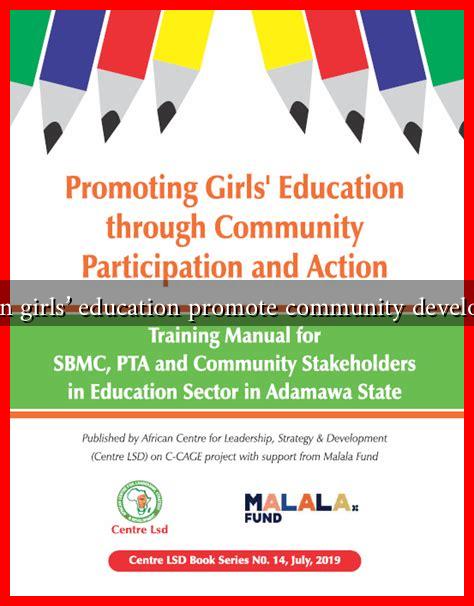-
Table of Contents
How Can Girls’ Education Promote Community Development?
Education is a powerful tool for change, and when it comes to girls’ education, the impact extends far beyond the individual. Educating girls can lead to transformative effects on communities, economies, and societies as a whole. This article explores the multifaceted ways in which girls’ education promotes community development, supported by research, statistics, and real-world examples.
The Ripple Effect of Educating Girls
Investing in girls’ education creates a ripple effect that benefits entire communities. When girls are educated, they are more likely to contribute positively to their families and society. Here are some key areas where the impact is most pronounced:
- Economic Growth: Educated women are more likely to participate in the workforce, leading to increased household incomes and economic stability. According to the World Bank, each additional year of schooling can increase a woman’s earnings by up to 20%.
- Health Improvements: Educated women tend to make better health choices for themselves and their families. They are more likely to seek medical care, understand nutrition, and have fewer children, which contributes to lower maternal and infant mortality rates.
- Social Empowerment: Education empowers girls to become leaders in their communities. Educated women are more likely to engage in civic activities, advocate for their rights, and influence policy decisions.
Case Studies: Success Stories from Around the World
Numerous case studies illustrate the profound impact of girls’ education on community development. Here are a few notable examples:
- Bangladesh: The BRAC (formerly Bangladesh Rural Advancement Committee) program has successfully educated millions of girls, leading to significant improvements in community health and economic conditions. The program has shown that for every additional year of schooling for girls, family income increases by 10-20%.
- Rwanda: Following the 1994 genocide, Rwanda prioritized girls’ education as a means of rebuilding the nation. Today, women hold over 60% of parliamentary seats, and the country has seen substantial economic growth and social stability as a result.
- India: The Beti Bachao Beti Padhao (Save the Girl Child, Educate the Girl Child) initiative aims to combat gender discrimination and promote girls’ education. The program has led to increased enrollment rates and improved gender ratios in schools, fostering a more equitable society.
Barriers to Girls’ Education
Despite the clear benefits, many girls around the world still face significant barriers to education. These include:
- Poverty: Families in low-income communities often prioritize boys’ education over girls’, viewing it as a better investment.
- Cultural Norms: In some cultures, traditional beliefs may discourage girls from pursuing education, leading to early marriages or domestic responsibilities.
- Lack of Infrastructure: In many regions, inadequate school facilities, transportation issues, and safety concerns can hinder girls’ access to education.
Strategies for Promoting Girls’ Education
To overcome these barriers and promote girls’ education, several strategies can be implemented:
- Community Engagement: Involving local communities in the education process can help shift cultural norms and prioritize girls’ education.
- Financial Incentives: Providing scholarships or financial assistance to families can alleviate the economic burden of educating girls.
- Policy Advocacy: Governments and NGOs should advocate for policies that promote gender equality in education and address systemic barriers.
Conclusion: The Path Forward
Girls’ education is not just a matter of individual rights; it is a catalyst for community development. By investing in girls’ education, we can unlock a multitude of benefits that extend to families, economies, and societies. The evidence is clear: educated girls lead to healthier, more prosperous, and more equitable communities. As we move forward, it is crucial to continue advocating for girls’ education and addressing the barriers that prevent girls from accessing this fundamental right. Together, we can create a brighter future for all.
For more information on the importance of girls’ education, visit UNICEF’s Girls’ Education page.

